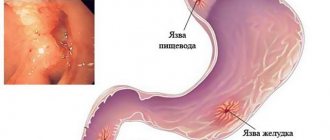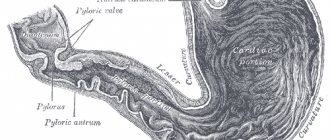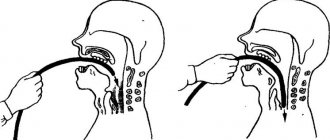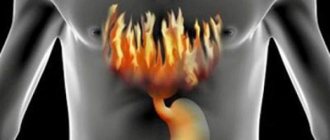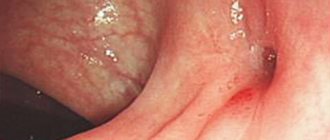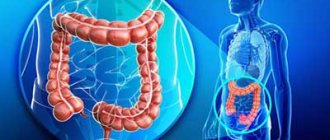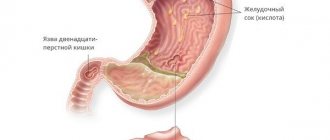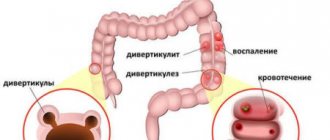Gastric and duodenal ulcers are a common disease in which ulcers form on the mucous membrane of the digestive organs. This pathology is diagnosed in every 10th person. Symptoms of peptic ulcer disease are more often observed in men than in women. Stomach and duodenal ulcers can lead to serious complications, so it is very important to start treating the disease as early as possible.
The treatment of the disease is based on medications of various forms that promote the onset of remission. Treatment with medications for stomach and duodenal ulcers is selected by the doctor and is almost no different. Drug therapy is selected only after a thorough examination and necessarily includes several pharmacological groups. The exact combination of drugs, as well as their dosage, should be determined by a gastroenterologist. Self-medication for ulcers is strictly unacceptable.
Drug therapy
The drugs that are used in the therapy process are quite numerous and are divided into several main categories:
- Drugs from the category of antisecretory agents.
- Preparations containing bismuth in their composition.
- Antibiotics.
- Antiprotozoal drugs.
- Medicines from the prokinetic category.
- Antacids.
Read more about medications for treating ulcers here...
Complications
The following complications may occur with a stomach ulcer:
- Bleeding. This complication is the most serious and also the most common. The reason for the bleeding lies in the fact that the walls of the arteries located at the bottom of the ulcer are corroded by gastric juice. There is light (hidden) and heavy bleeding. If there is severe bleeding, the patient vomits blood, and it has a dark color that is similar in appearance to coffee grounds;
- Perforation of the ulcer (perforation). When the depth of the ulcer increases greatly, a breakthrough of the affected stomach wall may occur. In this case, the patient feels acute pain in the abdominal area. If such a complication occurs, urgent hospitalization and surgery are required. If nothing is done, this will lead to peritonitis;
- Stenosis (obstruction, blockage) is observed in the gastric outlet. If the ulcer is located in the area of the antrum (it is the exit from the stomach), then as a result this exit is blocked, and the contents of the stomach lose the ability to leave it. The patient feels a gradual increase in nausea and vomiting after eating, as well as bloating and bloating. This complication also requires surgical intervention;
- Relapse. As a rule, an ulcer is a chronic disease, and therefore the likelihood of relapse is high;
- Stomach cancer. The bacteria Helicobacter pylori produces special carcinogens, which cause the development of a cancerous tumor in the area of the stomach affected by the ulcer. The initial sign of the degeneration of an ulcer into cancer is a change in the perception of taste or smell; in most cases, an aversion to certain products (most often meat) develops.
Antisecretory drugs
It is the drugs from this category that are actively used for illness. Appointments can be made here:
- M-anticholinergics;
- H2 receptor blockers;
- proton pump inhibitors.
M-CHOLINOLYTICS
Drugs in this category include:
- "Atropine";
- "Platifillin";
- "Pirenzepine";
- "Gastrocepin".
In the recent past, the drugs were actively used in treatment, but today they are gradually being replaced by more modern drugs. The antisecretory effect of taking these drugs is small, but their use is accompanied by many adverse reactions - tachycardia, dry mouth, etc.
H2 RECEPTOR BLOCKERS
More effective drugs in this category are H2 receptor blockers. Today, doctors have several new generation medications at their disposal (the names of medications are given as informational):
- "Cimetidine";
- "Ranitidine";
- "Famotidine";
- "Nizatidine";
- "Roxatidine."
The use of funds has a significant impact on the course of the disease:
- there is an increase in the overall percentage of scarring of ulcers;
- the duration of treatment is reduced;
- the percentage of cases requiring surgical intervention is reduced.
It is necessary to take H2 receptor blockers for a long time with a gradual reduction in dose. Abrupt withdrawal of the drug threatens increased acid production and premature recurrence of the ulcer.
PROTON PUMP INHIBITORS
This category includes the following tools:
- "Omeprazole" ("Omez");
- "Lansoprazole";
- "Pantoprazole";
- "Rabeprazole";
- "Esomeprazole."
Medicines help reduce acid production, as well as eliminate clinical symptoms of ulcers such as heartburn and pain.
"Omez" is used quite often in the treatment of ulcers. After just three days of using the drug “Omez”, an improvement in the general condition is noted - the pain goes away and the painful heartburn stops. Two weeks after the start of treatment, studies show the beginning of scarring. Complete healing of the wound surface of the stomach is observed after two months of using Omez.
For ulcers, Omez is prescribed in the form of capsules. In emergency situations, it can be administered intravenously, but the drug must be administered by a specialist.
Omez should be taken about 20 minutes before meals. But you can also drink while eating. Traditional regimen for taking the drug "Omez":
- one capsule per day;
- in case of exacerbation of the pathology, two Omez capsules are prescribed for the morning dose.
The maximum duration of taking Omez is no more than two months.
Read more about the dosage regimen here...
Treatment in a hospital setting
A patient who has gotten rid of a peptic ulcer through medication runs the risk of provoking a recurrence of the disease if he eats incorrectly. Modern medical technologies can reduce the likelihood of relapses. Laser treatment of stomach ulcers is a fast and effective way to eliminate the pathology.
This method involves cauterizing areas of the gastric mucosa with a laser beam. Special equipment is inserted through the esophagus. You can be completely cured in a few sessions. The exact number will be determined by a gastroenterologist. It will depend on the volume of the affected area of the mucosa.
Laser therapy has its contraindications. This technique is not used in the presence of tumors or blood clotting disorders. The condition of the ulcer itself also plays a role. If complications arise, the doctor will recommend a full-fledged operation to close the hole.
Treatment methods for bleeding stomach ulcers are different. With the development of complications, such as a perforated gastric ulcer, the pain intensifies. This condition requires emergency intervention. The person is often in serious condition. The patient needs surgery.
Emergency care for peptic ulcer disease involves promptly transporting the patient to a medical facility. It is possible to administer vasoconstrictor drugs and perform infusion therapy. In case of a perforated ulcer, the administration of narcotic analgesics is undesirable. Such drugs make the clinical picture unreliable.
Surgery is performed in a hospital using laparotomy. In this case, endotracheal anesthesia is more often used. A perforated ulcer cannot be cured without surgery. Timely first aid for a stomach ulcer will reduce the risk of complications.
In the hospital, a special massage is performed for gastric ulcers. This manipulation is recommended for remission of the disease. Bleeding and any other acute symptoms are a contraindication.
The massage is performed by a qualified staff member. The total procedure time is 15 minutes. Massage is performed for different purposes. The procedure allows you to:
- increase blood circulation intensity;
- accelerate tissue regeneration;
- strengthen organ motility;
- slow down the synthesis of hydrochloric acid;
- relieve pain.
Much attention is paid to the abdominal muscles that support the internal organs. In addition, the sternum, back, and neck are massaged. To achieve the effect, 14 sessions are required. Massage serves as an excellent measure for the prevention of ulcerative disease.
Medicines containing bismuth
An effective remedy used in the treatment of pathology are preparations with bismuth. And most often, ulcer therapy is carried out using the following compounds:
- "Tribimol";
- "Pilocid";
- "Ventrisol";
- "Trimo";
- "De-Nol."
Tablets for stomach ulcers "De-Nol" are widely used in the treatment of ulcers. When taken, De-Nol forms a colloidal mass that is evenly distributed on the surface of the mucosa. Ulcers are protected from exposure to aggressive substances for at least several hours.
“De-Nol” also helps to reduce the concentration of acid, returning the gastric composition to the permissible pH level.
Taking the drug "De-Nol" stimulates the formation of bismuth chelate compounds, which have a protective effect on the surface of existing ulcers. Additionally, “De-Nol”, interacting with gastric mucus, forms a special complex. And this compound is much more effective against hydrogen ions than regular stomach mucus.
In addition, “De-Nol” helps reduce the activity of the digestive enzyme pepsin, and also manifests itself as an excellent gastrocytoprotector. "De-Nol" is actively used in the treatment of ulcers caused by Helicobacter pylori infection.
You can take De-Nol in two ways:
- In the morning (before breakfast) and in the evening (before dinner) half an hour before eating.
- Four times a day - before breakfast, lunch, dinner and before bed.
Diseases of the operated stomach (postoperative complications)
Diseases of the operated stomach appear after surgical treatment of peptic ulcer and are caused by changes in the anatomical, physiological and neurohumoral interaction of the digestive organs both among themselves and with other internal organs and systems.
Dumping syndrome
There are two forms of dumping syndrome - early and late.
Early dumping syndrome
Dumping syndrome occurs in 3.5–8.0% of patients who have undergone gastrectomy according to Billroth II and is manifested by a variety of vasomotor disturbances after eating (weakness, sweating, palpitations, pale face, minor headaches, postural hypotension). At the same time, gastrointestinal syndrome may appear (heaviness and discomfort in the epigastric region, nausea, vomiting, belching, flatulence, diarrhea). These symptoms appear 30 minutes after eating and are described as early dumping syndrome. Of primary importance in its development is the rapid transition of the hyperosmolar contents of the stomach into the small intestine, which is accompanied by an increase in osmotic pressure in it, diffusion of plasma and an increase in fluid in the intestinal lumen, resulting in a decrease in plasma volume. Symptoms intensify due to stimulation of the receptor apparatus of the small intestine, leading to increased release of biologically active substances (acetylcholine, histamine, kinins, etc.) and an increase in the level of gastrointestinal hormones. At the same time, rapid absorption of carbohydrates occurs, excessive release of insulin with a change from hyperglycemia to hypoglycemia.
Treatment:
- Diet therapy is of primary importance. Food should be high-calorie, high in protein, vitamins, normal content of complex carbohydrates with a sharp limitation of simple carbohydrates. Patients are recommended boiled meat, lean meat cutlets, fish dishes, strong meat and fish broths, fermented milk products, vegetable salads and vinaigrettes seasoned with vegetable oil.
- Sugar, honey, milk, coffee, sweet liquid milk porridges, and hot dough are not recommended.
- Food should be taken in small portions, at least 6 times a day.
- In case of early dumping syndrome, after eating you need to lie in bed for 30 minutes.
- Pharmacotherapy includes local anesthetics (Novocaine 0.5% 30–56 ml or anesthesin 0.3 g orally 20–30 minutes before meals), anticholinergics (atropine 0.3–1.0 ml 0.1% solution, platiphylline 0.5–1.0 ml of a 0.2% solution subcutaneously or intramuscularly, metacin 50 mg orally 2–3 times a day 30 minutes–1 hour before meals) and myotropic antispasmodics (no-spa 40–80 mg orally 3 times a day, papaverine 40–60 mg orally 3–5 times).
Prokinetics
Most often, pathology therapy includes the use of the following drugs:
- "Coordinax";
- "Motilium";
- "Cerucal".
Medicines must be taken strictly before meals up to four times a day.
Prokinetics help:
- stimulating the motor function of the stomach;
- elimination of dyspeptic symptoms such as nausea and vomiting;
- relieving heartburn;
- eliminating the feeling of heaviness in the stomach;
- relieving unpleasant sensations.
It is necessary to take prokinetics as part of complex therapy, since as independent agents they do not have any effect on the course of the ulcer.
Proper nutrition is the key to successfully fighting the disease
Diet is an important component in the fight against ulcers. All foods on the diet should be boiled or steamed. Blanching and stewing are allowed. It is important to exclude from the diet all foods that irritate the walls of the stomach - spicy, too salty, smoked.
On a note! If you have an ulcer, you must exclude cold and hot foods from your diet - all food should be warm (30-35 degrees).
Diet for gastric and duodenal ulcers
Meals for ulcers should be divided - you need to eat little by little 5-6 times a day. You should not take too long breaks between meals. You can't overeat. It is important to drink plenty of clean water - up to 2 liters per day. What can you eat if you have an ulcer:
- Jelly-like soups with the addition of vegetables, boiled cereals, and meat.
- Porridge – buckwheat, rice, oatmeal. Can be cooked with water or milk.
- Puréed vegetable purees.
- Lean meat and river fish, steamed or boiled.
- Eggs – can be cooked soft-boiled or steamed as an omelet. Hard-boiled and fried eggs should not be consumed.
- Dairy products - milk, sour cream, fermented baked milk, cottage cheese, mild cheese, cheesecakes, curd soufflés and casseroles.
- Stale white bread and dry biscuits.
- Desserts - compotes, jelly, puree, soufflé, jelly based on boiled or baked fruits and berries.
What you can and cannot eat if you have an ulcer
What is strictly forbidden to eat if you have an ulcer:
- fatty meat (pork, goose, duck) and fish (mackerel saury, halibut, eel, salmon);
- mushrooms;
- smoked sausages;
- canned food (stewed meat, pates, sprats);
- vegetables - beans, peas, corn, cabbage;
- fruits with high acidity - tangerines, oranges, lemons, pineapples, etc.;
- sauces: ketchup: mustard, mayonnaise, vinegar;
- any alcoholic drinks;
- soft carbonated drinks;
- chocolate.
Drugs from the category of antacids
Antacids are designed to quickly eliminate such a serious condition as heartburn. At the same time, the drugs also reduce the existing pain syndrome, since they have adsorbent and astringent properties.
Taking antacids daily for more than fourteen days in a row is not recommended, since there is a high likelihood of side effects.
Recommended to use:
- "Almagel". Depending on the form of release, you need to take from one to three doses four times a day after meals.
- "Gastal." Take the drug up to six times a day after meals (after an hour).
- "Gelusil". The dosage regimen looks like this: up to six times a day, an hour after meals.
- "Maalox." Take one sachet up to four times a day, one and a half hours after meals.
- "Phosphalugel". Take one dose four times throughout the day.
The name of the drugs is probably familiar to everyone. But peptic ulcer disease cannot be treated solely by taking antacids. Medicines are used as part of combination therapy.
Diet
There is no evidence of accelerated healing of gastric and duodenal ulcers under the influence of therapeutic nutrition. But patients should avoid those foods that cause disturbances in the secretory and motor functions of the stomach.
Thus, dairy products increase the secretion of hydrochloric acid, probably due to the release of gastrin by calcium and protein. Fatty meats and fish, strong meat broths, spicy snacks, canned food, sausages, pastries, cold and carbonated drinks are prohibited. Caffeine and alcohol should be completely eliminated. Smoking cessation is necessary. Eating at night is not recommended.
Additional medications
Therapy of pathology, in addition to the drugs already discussed, involves taking the following drugs:
- Painkillers. This could be "Baralgin", "Ketorol".
- Antispasmodics – “No Shpa”, “Drotaverine”.
VITAMINS FOR ULCERS
The following vitamins will be especially useful:
- Vitamins A and E. Tocopherol (vitamin E) must be taken morning and evening, supplementing the intake with stomach-soothing agents. Retinol (vitamin A) protects the stomach from the development of peptic ulcers due to stress.
- Vitamins C and B6. Ascorbic acid increases immune defense, and a lack of vitamin B6 increases the risk of ulcer formation.
Symptoms of stomach and duodenal ulcers
Peptic ulcer disease is characterized by severe pain in the stomach, nausea, vomiting, bloating, heartburn, sour belching, and weakness. Possible weight loss, fatigue, pale skin and bowel dysfunction. The pain often appears at night and can radiate to the back.
It should be remembered that exacerbations of peptic ulcer disease occur in spring and autumn.
You need to pay close attention to the presence of such symptoms, because peptic ulcer disease leads to bleeding and other serious consequences.
How to treat peptic ulcer
Pathology therapy involves an integrated approach that combines drugs. The treatment regimen depends on the medical history.
COMPLEX THERAPY
Complex therapy of pathology looks like this:
- A combination of bismuth preparations and antacids may be prescribed. It has enveloping properties, i.e. cover the surface of the mucous membrane, protecting it from the negative effects of pepsin and hydrochloric acid.
- A combination of proton pump blockers (PPBs) and H2 receptors is also used. This reduces secretion production, relieving pain.
- Antibiotics. They help destroy existing infection by suppressing the development of bacteria.
This type of treatment is called triple therapy. At an early stage of the disease, it can be treated using the simplest scheme, including drugs such as Amoxicillin, Clarithromycin and one of the representatives of the STD category. If there is no improvement, the scheme can be strengthened.
ERADICATION THERAPY
One of the causes of peptic ulcer is the presence of Helicobacter pylori infection in the stomach. The bacterium is able to survive in the aggressive environment of the stomach, which allows the microorganism to create extensive colonies on the walls of the stomach. And in this case, so-called eradication therapy helps to cope with the pathology.
Pathology therapy involves two stages:
- The first stage of treatment is carried out using proton pump inhibitors (Omeprazole) in combination with antibiotics (Metronidazole and Clarithromycin). Admission period is a week.
- The second stage is assigned only if the first step does not produce results. A combination of the drugs Metronidazole, Tetracycline, a proton pump inhibitor and a bismuth-based drug is prescribed here. Duration of treatment is two weeks.
To alleviate the side effects of taking high doses of antibiotics, drugs that coat the stomach walls are additionally used.
QUADROTHERAPY PATHOLOGY
Quadruple therapy is a more effective treatment option for Helicobacter pylori infection, but it can only be used if there is no effect from eradication therapy.
Quad therapy of the disease includes:
- drug "De-Nol";
- proton pump or H2 receptor blocker;
- combination of two antibiotics;
- antibacterial agent "Nifuratel".
It is this type of treatment that gives the maximum effect, destroying up to 98% of all bacteria.
Drug treatment of stomach ulcers is no different from the treatment of duodenal ulcers. In both cases, measures are aimed at eliminating the causes and symptoms.
Indications and contraindications for drug treatment
Our service will select the best gastroenterologist for you free of charge when you call our Unified Appointment Center at 8 (499) 519-35-82. We will find an experienced doctor near you, and the price will be lower than if you contact the clinic directly.
Drug therapy for ulcerative lesions of the gastric or duodenal mucosa is prescribed if there are the following indications:
- Exacerbation of the pathological process.
- Infectious nature of the disease.
- Lack of improvement when following diet therapy.
- Progression of symptoms.
- Severe painful sensations.
- Signs of ulcer bleeding.
- Prevention of relapse.
Medicines are not prescribed for the treatment of peptic ulcer in the presence of the following conditions:
- A period of exacerbation accompanied by severe bleeding.
- Individual intolerance to the drug.
- The period of pregnancy and breastfeeding.
- Systemic infectious pathologies (sepsis, abscess).
- Severe chronic pathologies: HIV, diabetes, renal failure.
Also, taking medications is impossible in childhood and if you have recently been vaccinated against infectious diseases.
"Home" treatment for ulcers
How to treat stomach ulcers at home? First of all, during an exacerbation, you need to completely stop eating for a couple of days. This will allow the opened ulcer to calm down. After this, you can use “home” methods.
POTATO JUICE
Freshly squeezed potato juice perfectly relieves inflammation and promotes the healing of ulcers. Dosage regimen: half a glass twice a day (always before meals). The course of treatment is at least a month.
BEET JUICE
Another therapy recipe suitable for treating ulcers. Fresh vegetables need to be chopped using a grater and squeezed out the juice using gauze folded in several layers.
Take the drink according to the following scheme:
- Dilute the juice with boiled water in a 1:1 ratio.
- Take half a glass before starting a meal (about thirty minutes).
FLAX-SEED
You can use flax seeds at home. A decoction must be prepared from them.
- For two glasses of boiling water you need to take two spoons of the product. It is best to use a thermos for infusion.
- The infusion should stand all night. In the morning, bring it to a boil and immediately remove from heat.
The course of treatment is one third of a glass 30 minutes before meals.
Along with a decoction of flax seeds, you can eat one beaten egg white. After this, you can start eating only after an hour and a half.
EGG AND OIL MIXTURE
An excellent recipe to use at home. The product preparation process is as follows:
- Take an egg white and a spoonful of powdered sugar and olive oil.
- Whisk thoroughly.
Dosage regimen: spoon in the morning on an empty stomach. The course of treatment is until the painful symptoms are completely relieved.
The egg-oil mixture is a fairly effective method, since relief comes after just a couple of doses of the product.
ALOE AND HONEY MIXTURE
To prepare the product you need:
- Mix aloe pulp, strong alcohol and liquid honey in equal parts.
- It will take a day to infuse.
The course of treatment is one and a half months, a large spoon every day.
POTATO JUICE, PROPOLIS AND SEA BUCKTHORN OIL
The course of treatment is quite long, since it involves taking medications in stages.
The first thing you need to take is potato juice. The regimen is one hundred grams twice a day. The course of treatment is a week.
After this, treatment must be continued with propolis tincture. You can make it yourself, or purchase it from a pharmacy chain. Usage regimen: twenty-five drops per glass of water three times during the day (after meals). The course of treatment is twenty-one days.
The third step is taking sea buckthorn berry oil. The product can be prepared at home or purchased ready-made. Scheme: Take a small spoon three times a day. The course of treatment is exactly one month.
It is advisable to practice this course of therapy twice a year.
Cauterization of an ulcer - how is it done?
This is how a classic laser treatment session for the main digestive organ is performed today.
A rubber tube is inserted into the patient through the mouth, as with conventional diagnostic fibrogastroscopy.
Next, the specialist, under visual supervision, cauterizes the ulcerative wound with a beam.
To obtain the desired effect, the procedure should be repeated 7-10 times. It’s an unpleasant matter for the patient, but it produces the result—long-term remission—much faster than simply taking medications.
Here is information that proves the effectiveness of laser therapy. Sometimes it allows you to almost completely cure the ulcer. The information is taken from the results of a study conducted in 2000 by V.A., candidate of medical sciences, employee of the PFK RUDN University. Builin.
| Means to combat the disease | Average time to remission, days | Complete healing,% | Relapse cases, % |
| Traditional course of medication | 35 | 77 | 80 |
| Using a laser | 15 | 94 | 24 |
Note that using this method you can fight ulcers not only of the stomach, but also of the duodenum. It is again advisable to cauterize the problem area of the intestine in order to achieve stable remission.

